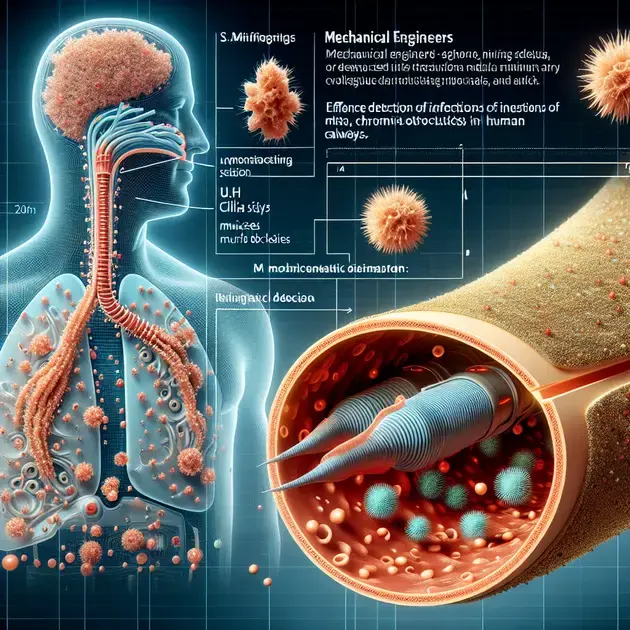
Title: Artificial Cilia Revolutionize Monitoring of Mucus Conditions in Human Airways
Introduction:
Mechanical engineers have recently made groundbreaking advancements by developing a cutting-edge system of artificial cilia. These microscopic hair-like structures offer a unique solution for monitoring mucus conditions in the human airways. With the potential to greatly enhance the detection of infection, airway obstruction, and assess the severity of diseases such as Cystic Fibrosis (CF), Chronic Obstructive Pulmonary Diseases (COPD), and lung cancer, this innovative technology holds immense promise for the medical field.
The Role of Cilia in the Respiratory System:
Natural cilia are tiny hair-like structures found in the respiratory system and play a crucial role in keeping the airways clear. They constantly beat in coordinated patterns, removing mucus, debris, and pathogens that might otherwise cause respiratory ailments. Dysfunction or damage to cilia can lead to the accumulation of mucus and subsequent respiratory problems.
The Need for Reliable Monitoring:
Accurate monitoring of mucus conditions in the airways is critical for understanding the progression of respiratory diseases, optimizing treatment plans, and avoiding complications. However, existing monitoring methods are often invasive, time-consuming, or lack precision, which has led to a demand for more advanced solutions.
The Revolutionary Artificial Cilia System:
The system developed by mechanical engineers introduces artificial cilia that mimic the functions of natural ones. These synthetic structures are capable of monitoring mucus conditions in real-time while offering several advantages over traditional techniques. Comprised of advanced materials and powered by microactuators, they can imitate the beating motion of natural cilia and provide valuable data regarding mucus viscosity, quantity, and overall airway health.
Potential Applications:
The application of artificial cilia in detecting infection, airway obstruction, and assessing disease severity is vast. For instance, in Cystic Fibrosis, which is characterized by thick and sticky mucus, the artificial cilia system could offer valuable insights into mucus clearance efficiency and help healthcare professionals tailor treatments accordingly. Similarly, in the case of Chronic Obstructive Pulmonary Diseases (COPD) and lung cancer, the system could provide real-time data on mucus conditions, allowing for proactive interventions and improved disease management.
Looking Towards the Future:
The development of artificial cilia for monitoring mucus conditions in human airways marks a significant step forward in respiratory healthcare. With further advancements and refinements, this technology has the potential to transform diagnostics, treatment, and management of respiratory diseases. The continuous integration of engineering and medicine holds promise for creating more innovative solutions that significantly improve patient outcomes.
Conclusion:
Mechanical engineers have successfully engineered a system of artificial cilia for monitoring mucus conditions in human airways. This groundbreaking technology has the potential to revolutionize the detection and management of respiratory diseases like Cystic Fibrosis, COPD, and lung cancer. As researchers continue to refine and optimize this system, we can look forward to a future where early detection, personalized treatments, and improved quality of life become the norm for individuals suffering from respiratory ailments.